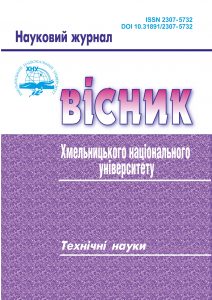STUDY OF PHYSICAL-MECHANICAL PROPERTIES OF PUMPKIN SEEDS FOR NUMERICAL SIMULATION OF THEIR SEPARATION PROCESS
DOI:
https://doi.org/10.31891/2307-5732-2023-323-4-310-317Keywords:
seeds, pumpkin, separation, purification, properties, modelingAbstract
This article presents the results of research on the physical and mechanical properties of pumpkin seeds with the aim of their numerical modeling in the process of separation. Studying the physical and mechanical properties of pumpkin seeds is an important step for understanding the mechanisms of separation and optimizing this process.
The article examines the physical and mechanical properties of pumpkin seeds, such as geometric parameters, mass, density, modulus of elasticity, coefficient of friction, and others. To determine these properties, various research methods were used, in particular, microscopy, dynamic mechanics and experiments on separators.
The obtained results make it possible to build a numerical model of the pumpkin seed separation process. This model can be used to predict and optimize the efficiency of separation systems. The authors of the article discuss possible approaches to improving the separation process based on the obtained results and recommend further research directions.
The article established for the first time that the angle of external friction of pumpkin pulp depends on external pressure. The established causes of this phenomenon are, first of all, a change in structure, squeezing out air and water. An original technique was developed and the dependence was tracked. Research has shown that the coefficient of friction increases in direct proportion to the external pressure in the range of up to 0.5 MPa. With sufficient accuracy for calculations, it can be assumed that the friction coefficient increases by an average of 0.03 for every 0.1 MPa of pressure. It was established that the elasticity of pumpkin seeds and resistance to mechanical damage in the form of a puncture is directly proportional to its geometric dimensions.

